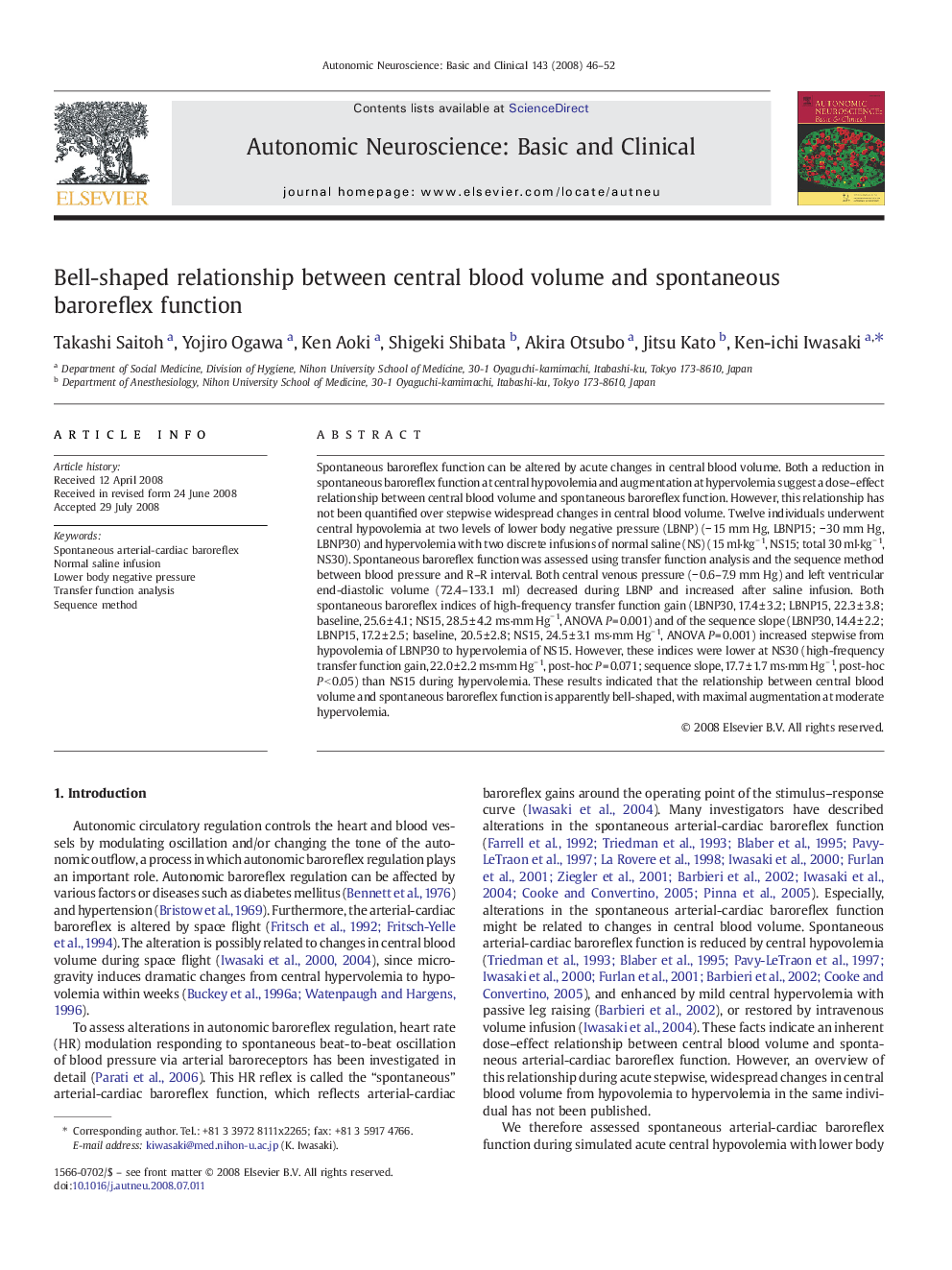| Article ID | Journal | Published Year | Pages | File Type |
|---|---|---|---|---|
| 3035485 | Autonomic Neuroscience | 2008 | 7 Pages |
Spontaneous baroreflex function can be altered by acute changes in central blood volume. Both a reduction in spontaneous baroreflex function at central hypovolemia and augmentation at hypervolemia suggest a dose–effect relationship between central blood volume and spontaneous baroreflex function. However, this relationship has not been quantified over stepwise widespread changes in central blood volume. Twelve individuals underwent central hypovolemia at two levels of lower body negative pressure (LBNP) (− 15 mm Hg, LBNP15; − 30 mm Hg, LBNP30) and hypervolemia with two discrete infusions of normal saline (NS) (15 ml·kg− 1, NS15; total 30 ml·kg− 1, NS30). Spontaneous baroreflex function was assessed using transfer function analysis and the sequence method between blood pressure and R–R interval. Both central venous pressure (− 0.6–7.9 mm Hg) and left ventricular end-diastolic volume (72.4–133.1 ml) decreased during LBNP and increased after saline infusion. Both spontaneous baroreflex indices of high-frequency transfer function gain (LBNP30, 17.4 ± 3.2; LBNP15, 22.3 ± 3.8; baseline, 25.6 ± 4.1; NS15, 28.5 ± 4.2 ms·mm Hg− 1, ANOVA P = 0.001) and of the sequence slope (LBNP30, 14.4 ± 2.2; LBNP15, 17.2 ± 2.5; baseline, 20.5 ± 2.8; NS15, 24.5 ± 3.1 ms·mm Hg− 1, ANOVA P = 0.001) increased stepwise from hypovolemia of LBNP30 to hypervolemia of NS15. However, these indices were lower at NS30 (high-frequency transfer function gain, 22.0 ± 2.2 ms·mm Hg− 1, post-hoc P = 0.071; sequence slope, 17.7 ± 1.7 ms·mm Hg− 1, post-hoc P < 0.05) than NS15 during hypervolemia. These results indicated that the relationship between central blood volume and spontaneous baroreflex function is apparently bell-shaped, with maximal augmentation at moderate hypervolemia.
